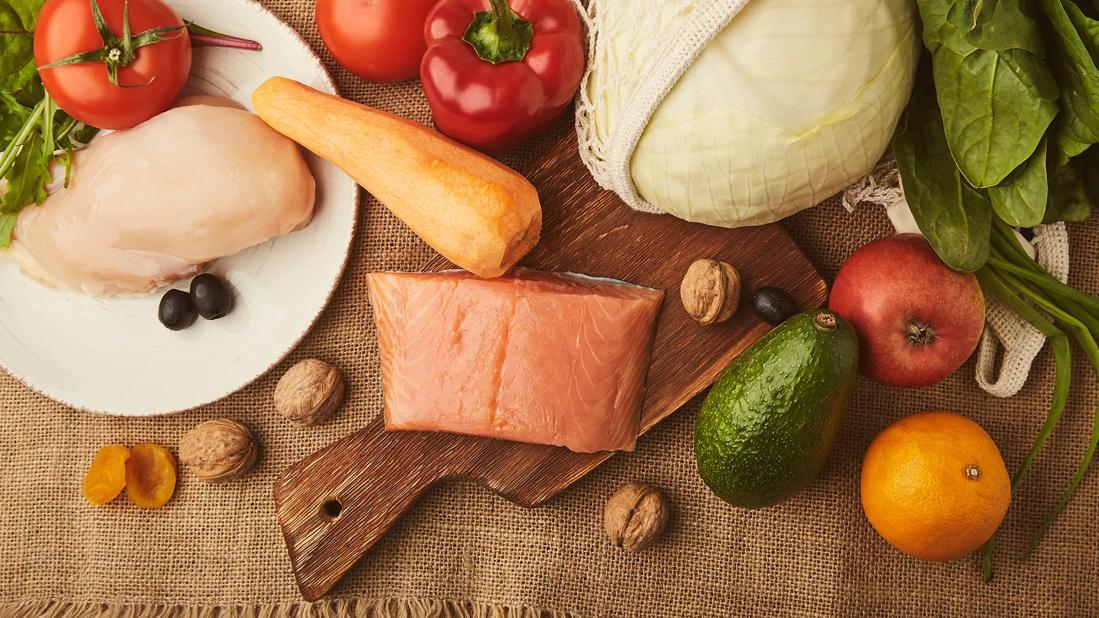Have SIBO? Here’s the Best and Worst Foods To Eat
Opt for low-FODMAP foods, like grapes, carrots and soy milk, that are easy to digest and help create a balanced gut

All of us have bacteria in our gut, but most of it is located in our large intestine. Small intestinal bacterial overgrowth (SIBO) happens when there’s a disruption to the normal amount of bacteria found in your small intestine.
Research suggests that SIBO may play a significant underlying factor in irritable bowel syndrome (IBS).
So, could following a SIBO diet and changing what you eat help manage symptoms?
It can help and may be one of many things your healthcare provider suggests, in addition to antibiotics or other complementary therapies.
Diets to follow if you have SIBO
If you have SIBO, you want to limit or avoid foods that may increase the amount of bacteria in your small intestine. An increase in bacteria can lead to symptoms like bloating and abdominal discomfort, says functional medicine specialist Melissa Young, MD.
The goal is to make sure you’re eating the right combination of foods that supply the nutrients your body can absorb. Doing so can help starve excess bacteria and create a balanced gut.
“Bacteria primarily consume carbohydrates, which results in the production of gases,” explains Dr. Young. “Recommended diet plans aim to decrease certain groups of carbs to both reduce the bacteria and the gas they produce.”
While there isn’t an official “SIBO diet,” your healthcare provider may recommend an eating plan like the following.
Low-FODMAP diet
“FODMAP” stands for fermentable oligosaccharides, disaccharides, monosaccharides and polyols. FODMAPs are foods that you may have trouble digesting when you have SIBO.
A low-FODMAP diet focuses on limiting or eliminating high-FODMAP foods, like beans, lentils and wheat-based snacks. The idea is that avoiding high-FODMAP foods may slow bacterial overgrowth that happens when bacteria feed on these types of foods.
Instead, you want to fill your plate with low-FODMAP foods, like proteins, vegetables, fruit, grains and dairy, as well as nuts and seeds, that are less likely to trigger a bacterial growth spurt.
Some foods that are considered low-FODMAP include:
- Fruits like grapes, oranges and strawberries
- Vegetables like carrots, cucumbers and tomatoes
- Nuts and seeds like walnuts and pumpkin seeds
- Dairy alternatives like almond milk and soy milk
- Protein options like eggs and plain, cooked meats, poultry and seafood
- Gluten-free grains like quinoa and oats
“After the initial elimination phase of about three to four weeks while you’re being treated for SIBO, you’ll then slowly reintroduce food from one high-FODMAP group at a time,” says Dr. Young.
Following a low-FODMAP diet long term isn’t recommended, as many of these highly fermentable foods feed your gut microbiome.
Elemental diet
You may want to consider the elemental diet for SIBO, especially if you and your healthcare provider choose not to use antibiotics or other complementary therapies, like a course of herbal therapy recommended by your provider. This purely liquid diet comes in powder or liquid form. You’ll stay on the diet for about two to three weeks if you’re being treated for SIBO. Dr. Young says it’s an effective treatment option for SIBO.
The formula is easy to digest and contains essential nutrients your body needs in a “predigested” form containing amino acids, fatty acids, vitamins and minerals.
“With the elemental diet, the dietary building blocks and nutrients are more easily digestible and absorbed sooner in the digestive tract, so it’s much less likely to make it to the bacterial source in your small intestine,” she explains.
Research shows the elemental diet works. But it only works if you stay with it. That can be a challenge for reasons ranging from the way the formula tastes to being hungry, bored or frustrated because you can’t participate in family or social events that center around food.
Working with a registered dietitian or health coach while following the elemental diet can be helpful.
Foods to avoid
If you have SIBO, you may want to consider reducing or avoiding the following high-FODMAP foods:
- Fruits like apples, pears and cherries
- Vegetables like onions, cauliflower and mushrooms
- Dairy options like milk, ice cream and soft cheeses
- Beans and lentils
- Grains like wheat and rye
- Certain nuts like pistachios and cashews
- Sweeteners like honey and sugar alcohols like xylitol and sorbitol
Bottom line? It’s all about customization
Making changes to what you eat to improve SIBO symptoms takes collaboration between you and your healthcare team. At least 50% of people may experience recurring SIBO.
One of the more intimidating aspects of dealing with SIBO is the thought that some foods will always be on the no-go list. But Dr. Young notes that food plans to manage SIBO aren’t black-and-white — and what you eat and what you need to limit or avoid can be personalized for you.
“After treatment, if you’re feeling better, you can start to reincorporate the FODMAP foods into your diet. They’re often better tolerated,” she adds.
“That being said, you may find certain foods will always trigger your symptoms. Those are the ones you may need to continue to avoid or reduce how much of the specific foods you eat. If you’re still having bloating after eating certain foods, working with a dietitian can help.”